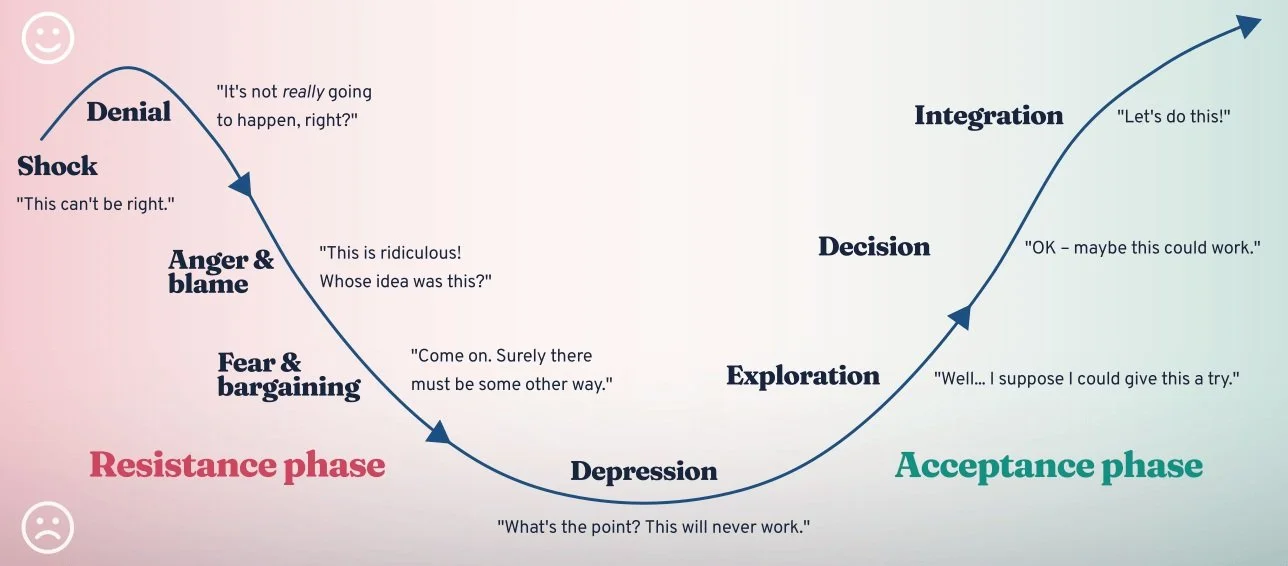Leading Through the Change Curve: Emotional Intelligence as Your Change Superpower
The past several months have shaken me to my core. When my job was eliminated, it felt like the ground had been pulled out from under me. I was overwhelmed—stressed, uncertain, and heartbroken. I had poured so much of myself into that role—late nights, missed family moments, relentless commitment—and as soon as I felt like I had learned to navigate the organization, it was gone. I grieved. I questioned everything. I got angry. Really angry!
But somewhere in the stillness that followed, a new thought began to take root: What if this was my chance to finally build a life that honored both my ambition and my need for balance? What if this wasn’t an end, but a beginning?
As I’ve reconnected with friends and peers, I’ve realized I’m not alone. Some have walked away from jobs that no longer aligned with their values. Others are caught in the chaos of company acquisitions. And many, like me, have been laid off—left to navigate uncertainty and redefine what comes next. The common theme running through all of our stories? Change
Change is relentless. It doesn’t ask permission, and it rarely arrives on our terms. Whether it’s a sudden loss, a shift in direction, or a quiet realization that something has to give, we all face it. And we all move through it differently.
One of the most powerful tools I’ve found for understanding this emotional journey is the Change Curve, rooted in Elisabeth Kübler-Ross’s model of grief. It gives language to what so many of us are feeling and reminds us that with every low point comes the possibility of renewal.
While the curve typically includes stages like shock, denial, frustration, depression, experimentation, decision, and integration, emotional intelligence (EQ) plays a crucial role in how successfully someone moves through each phase.
Why Emotional Intelligence Matters in Times of Change
According to TalentSmart, 90% of top performers score high in emotional intelligence. This ability to recognize, understand, and manage your emotions—and those of others—can help you:
Acknowledge your initial reactions without judgment
Empathize with others who may be stuck in denial or frustration
Self-regulate when stress peaks or motivation dips
Communicate more effectively through uncertainty
Influence outcomes positively by supporting others toward acceptance
Pairing EQ with the Change Curve
When leaders and teams apply emotional intelligence to the change curve, they shift from resistance to resilience. For example:
In the denial stage, self-awareness can help individuals confront discomfort instead of avoiding it.
During frustration, empathy can de-escalate conflict and help others feel heard.
As teams move toward acceptance, optimism and emotional agility empower experimentation and innovation.
Moving Forward
Coaching, reflection, and honest dialogue are powerful tools for activating emotional intelligence during change. At Activate 10, we help professionals strengthen their EQ skills so they can lead and adapt with confidence—no matter where they are on the curve.

